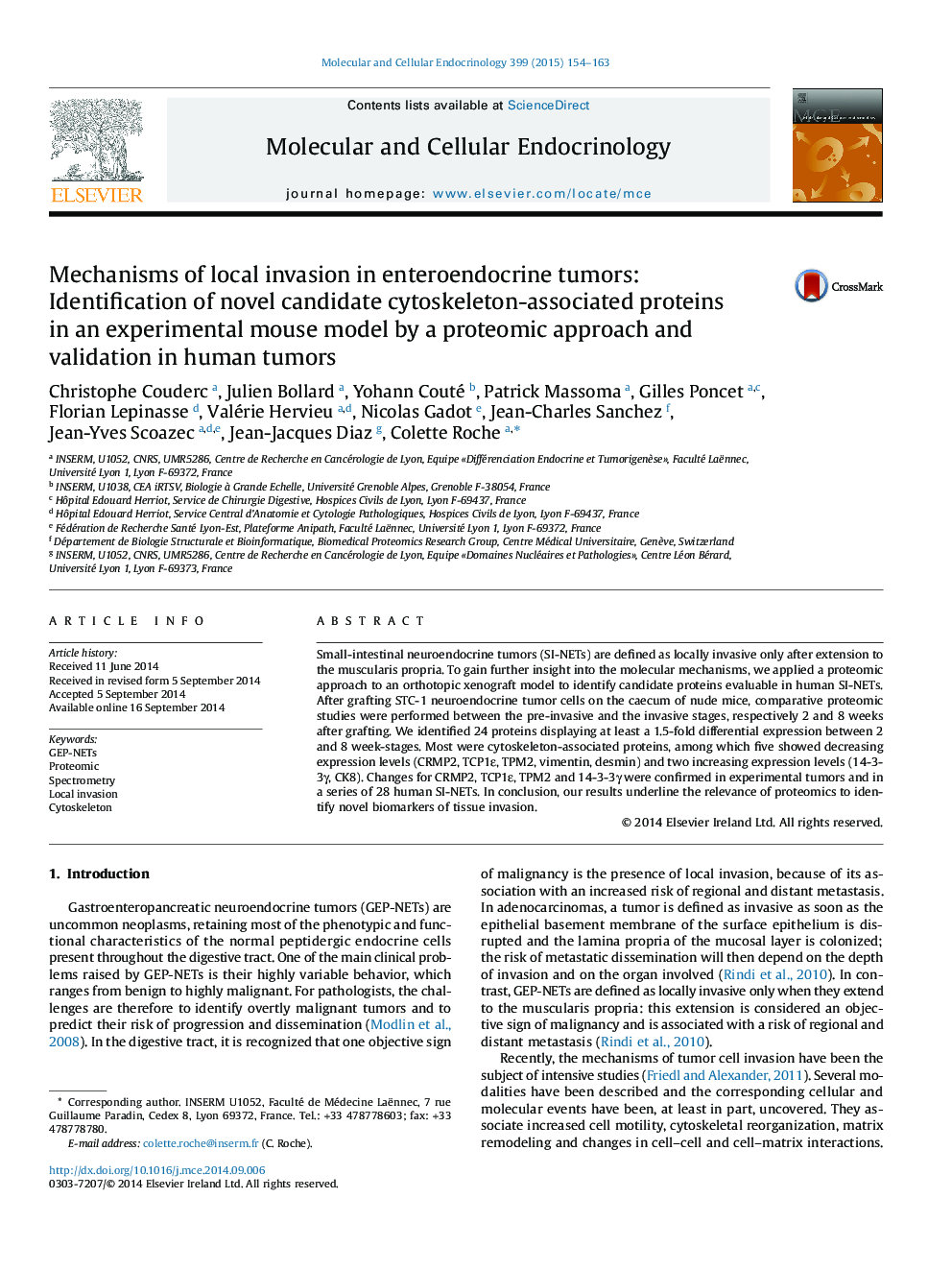| Article ID | Journal | Published Year | Pages | File Type |
|---|---|---|---|---|
| 2195959 | Molecular and Cellular Endocrinology | 2015 | 10 Pages |
•Local invasion by small-intestinal neuroendocrine tumors (SI-NETs) is poorly known.•An orthotopic xenograft mouse model was analyzed through a proteomic approach.•We identified several candidate proteins as potential biomarkers of SI-NETs invasion.•Most of them were cytoskeleton-associated proteins: CRMP2, TPM2, TCP1ε, and 14.3.3γ.•We validated these proteins in a series of 28 human SI-NETs.
Small-intestinal neuroendocrine tumors (SI-NETs) are defined as locally invasive only after extension to the muscularis propria. To gain further insight into the molecular mechanisms, we applied a proteomic approach to an orthotopic xenograft model to identify candidate proteins evaluable in human SI-NETs. After grafting STC-1 neuroendocrine tumor cells on the caecum of nude mice, comparative proteomic studies were performed between the pre-invasive and the invasive stages, respectively 2 and 8 weeks after grafting. We identified 24 proteins displaying at least a 1.5-fold differential expression between 2 and 8 week-stages. Most were cytoskeleton-associated proteins, among which five showed decreasing expression levels (CRMP2, TCP1ε, TPM2, vimentin, desmin) and two increasing expression levels (14-3-3γ, CK8). Changes for CRMP2, TCP1ε, TPM2 and 14-3-3γ were confirmed in experimental tumors and in a series of 28 human SI-NETs. In conclusion, our results underline the relevance of proteomics to identify novel biomarkers of tissue invasion.
